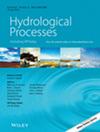Urban Snowmelt Runoff Responses to the Temperature-Hydraulic Conductivity Relation in a Cold Climate
Abstract
Urban winter runoff management was mainly regulated by temperature variations and the snow-removing measures, but the underlying mechanism of the temperature-hydraulic conductivity (T-K) relation was seldom studied for urban environments and far from clearly understood. It is imperative to consider the T-K relation for snowmelt runoff calculation especially when the compound effects with the snow-removing measures and low impact development (LID) need to be considered. This work investigated the temperature regulation on urban infiltration and snowmelt runoff by a proposed modelling framework. A series of hydrologic model experiments revealed a crucial link between the hydraulic conductivity and snowmelt runoff emphasising the role of temperature in the partitioning between percolation and runoff. The inclusion of a T-K relation in the SWMM model resulted in a 26.0%–37.1% decrease in infiltration and a 12.7%–25.8% increase in runoff. The effects of the T-K relation were found to become more significant when the anthropogenic interventions such as snow-clearing measures and LID were applied. After the T-K mechanism was modelled, the infiltration and the runoff caused by the snow-clearing measures were reduced by 33.7%–48.2% and raised by 19.7%–35.6%, respectively, and LID would further reduce infiltration by 46.2%–65.2% and increase runoff by 71.0%–105.2%. This study serves as one of the first a few attempts to improve the understanding of the freeze–thaw cycles of land surface in urban environments.

 求助内容:
求助内容: 应助结果提醒方式:
应助结果提醒方式:


